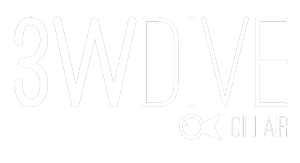by Joe Taylor
Ask this question enough times and you’ll soon realize there is no unanimous answer. And in fact, we’d recommend not bothering to ask divers this question at all. This is because the majority will be convinced the agency they trained with is the best. So, to save you the hassle of listening to repeated dive related lectures, we’ve tried to lay it out right here, right now… Everything you need to know about PADI and SSI.

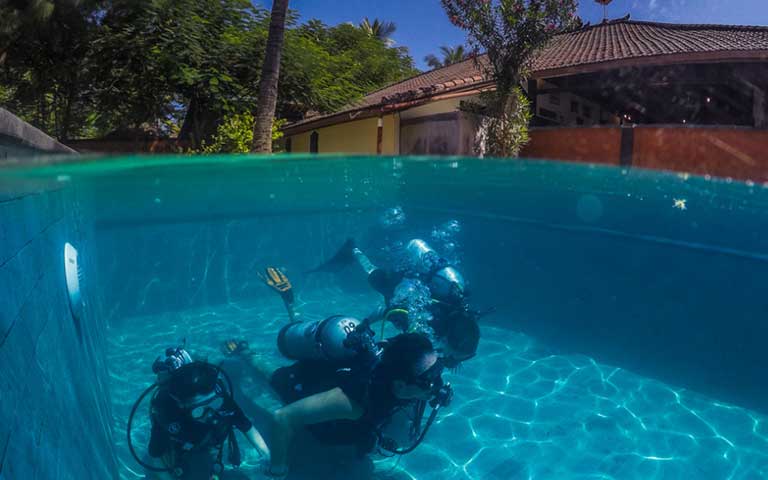
Who the hell are PADI and SSI?
First things first, let’s get to grips with who or what are behind the acronyms PADI and SSI.
As somebody interested in scuba diving (or even if you’re not), you’ve probably heard of at least one of these agencies. And chances are it’s PADI. The Professional Association of Diving Instructors (PADI) is the largest scuba training agency throughout the world. As a result, it is often viewed as a stamp of quality by travelers looking to dive. Looking for a respected brand name when choosing a dive center is definitely a good idea, so no bones to pick there. But PADI is just one of many respectable training agencies and divers shouldn’t have to restrict themselves.
As somebody interested in scuba diving (or even if you’re not), you’ve probably heard of at least one of these agencies. And chances are it’s PADI. The Professional Association of Diving Instructors (PADI) is the largest scuba training agency throughout the world. As a result, it is often viewed as a stamp of quality by travelers looking to dive. Looking for a respected brand name when choosing a dive center is definitely a good idea, so no bones to pick there. But PADI is just one of many respectable training agencies and divers shouldn’t have to restrict themselves.
Scuba Schools International (SSI) is the world’s largest, store-based, training agency and is recognized globally. Like PADI, an SSI certification will allow you to dive with any scuba center that practice recreational diving. But the SSI brand is often unknown among new divers because it hasn’t had the same exposure as PADI.
In fact there are many other recreational scuba training agencies you may not have heard of such as SDI, NAUI, BSAC, etc… in fact a lot of country have their own scuba training agency and sometimes even more than one.
It is important to remember that both agencies exist to create capable divers. Both also follow the same standards laid out by the World Recreational Scuba Training Council (WRSTC). This means the minimum skill and knowledge requirements are the same, no matter which agency you’re training with. So, the training agency creates the rules based on WRSTC guidelines. Dive centers follow rules created by their training agency. And finally, instructors follow the same rules as their dive center.
In fact there are many other recreational scuba training agencies you may not have heard of such as SDI, NAUI, BSAC, etc… in fact a lot of country have their own scuba training agency and sometimes even more than one.
It is important to remember that both agencies exist to create capable divers. Both also follow the same standards laid out by the World Recreational Scuba Training Council (WRSTC). This means the minimum skill and knowledge requirements are the same, no matter which agency you’re training with. So, the training agency creates the rules based on WRSTC guidelines. Dive centers follow rules created by their training agency. And finally, instructors follow the same rules as their dive center.
Differences in scuba diving courses with PADI and SSI
So, if both agencies follow the same standards, how is there any difference at all? Well, it’s less about what you’re taught and more about how it’s taught to you.
PADI is a large organization which has developed a high level of trust within the industry. This is partly due to their rigid training structure, which requires that courses are taught to a detailed plan. This allows every dive center to offer the exact same quality of training. It also ensures that students will receive a high standard of teaching. But, some say this stops instructors adapting their approach for different students.
SSI allows instructors more freedom to teach using extra knowledge and from personal experience, it is called the flexibility rules (80 course/20 instructor). PADI, on the other hand, labels this as ‘over-teaching’. The flexibility in SSI courses means students can progress at their own pace, completing tasks they find more challenging once they have more confidence. It also allows instructors to tweak teaching methods to better suit individual students.
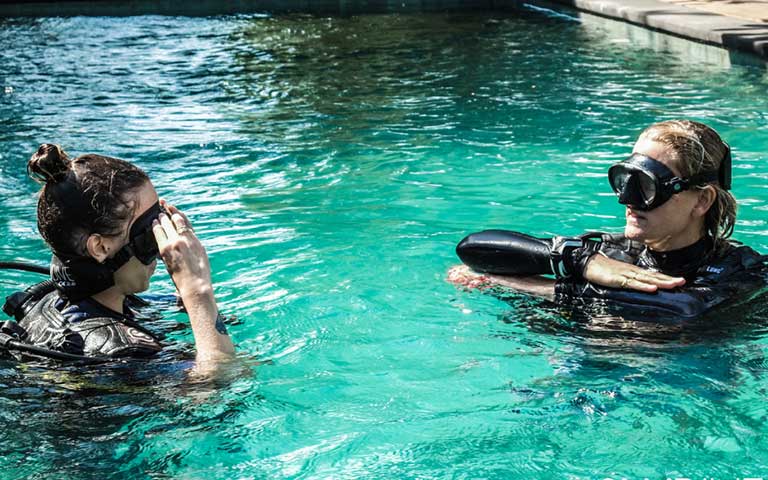
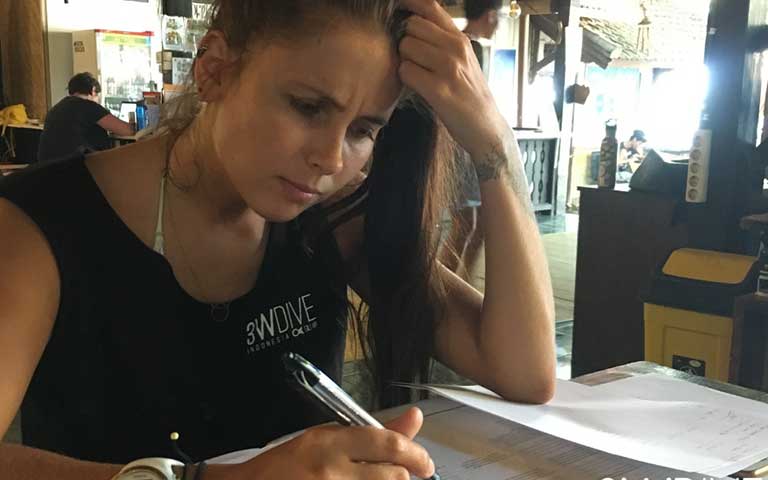
Course materials and what’s provided
When training with PADI, students are required to buy the course materials on top of the course price. The materials for PADI courses come with a Personal Identification Certification. This is needed to certify students at the end of their course, but means the manuals cannot be shared, loaned or re-sold.
This in itself is not a bad idea as it means every PADI certified diver has their own copy of the theory. A useful thing to have if they want to refresh themselves at a later date. But, it does add one extra cost. The physical manual can also be awkward for people taking courses overseas.
While you can still buy learning materials from SSI, they also allow students to borrow them. Clearly, this can be handy for anybody, but especially those currently on the move. They also include a free digital learning kit with every course. This can be accessed online, or through the SSI app, once the dive center has created your SSI profile. We’re sure we don’t have to explain the benefits of a free course manual which fits in your pocket.
While you can still buy learning materials from SSI, they also allow students to borrow them. Clearly, this can be handy for anybody, but especially those currently on the move. They also include a free digital learning kit with every course. This can be accessed online, or through the SSI app, once the dive center has created your SSI profile. We’re sure we don’t have to explain the benefits of a free course manual which fits in your pocket.
Diving courses with 3WDive
As you can see, for the average diver, the differences between PADI and SSI are minimal. Here at 3WDive, we favor SSI, because we believe in the flexibility rule as it allows us to offer a more tailored diving experience.
In the end, we feel that the instructor will have a far bigger impact on a student learning experience. It is up to them to teach you the necessary skills to be a scuba diver and ensure you learn them well. Our multicultural staff come from a variety of diving backgrounds, such as PADI, SSI, and CMAS. All that combined knowledge and experience will help to seep into our students, creating passionate divers with high personal standards.
In the end, we feel that the instructor will have a far bigger impact on a student learning experience. It is up to them to teach you the necessary skills to be a scuba diver and ensure you learn them well. Our multicultural staff come from a variety of diving backgrounds, such as PADI, SSI, and CMAS. All that combined knowledge and experience will help to seep into our students, creating passionate divers with high personal standards.

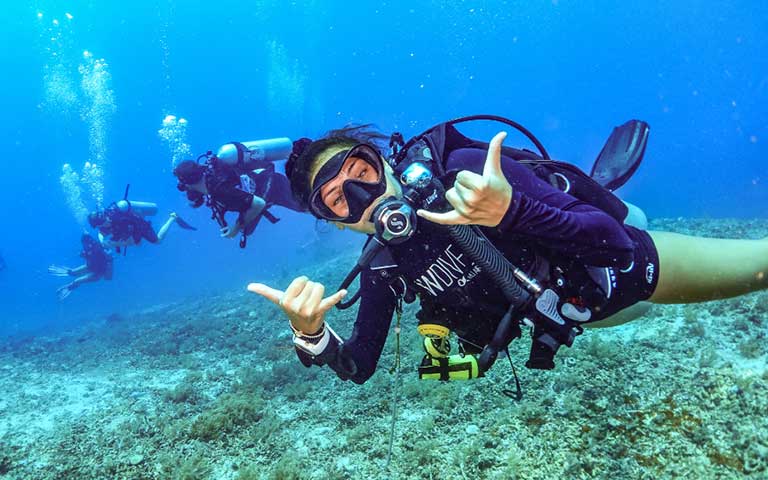
We strive to make our dive center a hive of underwater excitement. Our hope is that this environment will encourage students of all levels (from open water to divemaster) to absorb as much knowledge as possible. But, even though we love helping divers progress their underwater education, we also value authenticity. This means we will never push people through courses they aren’t ready for.
In the end, the best thing for improving your scuba diving skills is, you guessed it, going scuba diving. So swing by, grab a tank and let us help you do what you love best. We can talk about levelling up your scuba skills later.
In the end, the best thing for improving your scuba diving skills is, you guessed it, going scuba diving. So swing by, grab a tank and let us help you do what you love best. We can talk about levelling up your scuba skills later.
